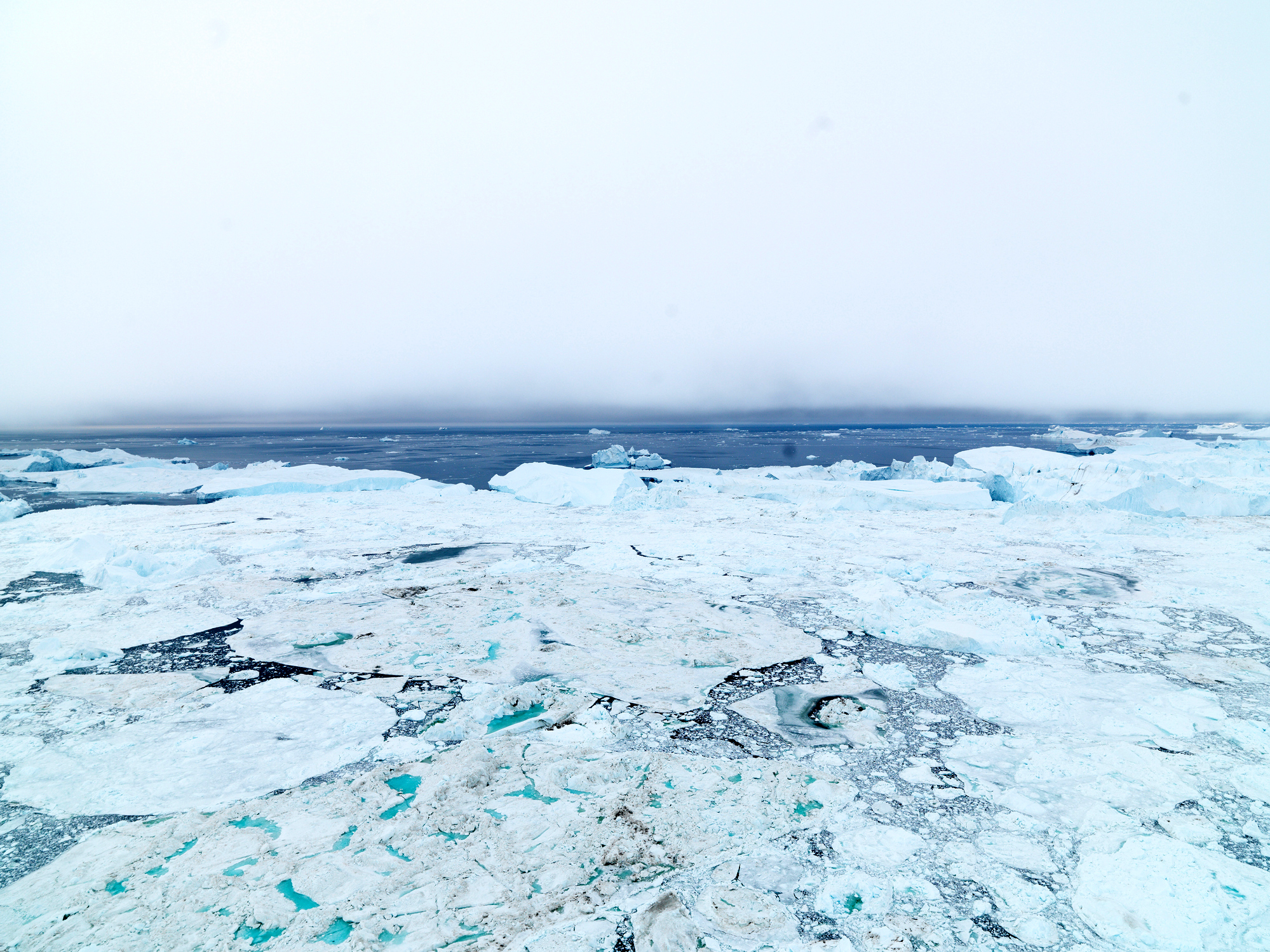The truth about the North Pole
As it melts, Santa's headquarters is becoming a geopolitical flash point

As it melts, Santa's headquarters is becoming a geopolitical flash point. Here's everything you need to know:
Where is the North Pole?
Its exact location is surprisingly ... polarizing. There are technically four North Poles. The terrestrial North Pole is the precise point atop Earth's axis, a spot in the middle of the Arctic Ocean that is almost always covered with 6 to 10 feet of ice. The North Dip Pole, meanwhile, marks the spot where Earth's geomagnetic field points directly downward; all compasses point to this location. Because of the spinning of the planet's core, the Dip Pole is a moving target; in the past century it drifted from northern Canada to the Arctic Ocean and is now moving toward Siberia. There's also the geomagnetic North Pole, the top of an imaginary line running through the planet's center, and North Pole, Alaska, a suburb of Fairbanks about 1,700 miles south of the terrestrial pole.
The Week
Escape your echo chamber. Get the facts behind the news, plus analysis from multiple perspectives.

Sign up for The Week's Free Newsletters
From our morning news briefing to a weekly Good News Newsletter, get the best of The Week delivered directly to your inbox.
From our morning news briefing to a weekly Good News Newsletter, get the best of The Week delivered directly to your inbox.
Why does Santa live there?
St. Nicholas, a wiry 3rd-century Christian who used his inherited wealth to benefit children, lived in present-day Turkey. Yet in the December 1866 issue of Harper's Weekly, the legendary cartoonist Thomas Nast drew a jolly, rotund Santa Claus, listing his home address as "Santa Claussville, N.P." Each year, the U.S. Postal Service receives hundreds of thousands of wish lists addressed to "Santa Claus, North Pole." Nobody could have fact-checked Nast at the time he located Santa's workshop, as the remote pole, surrounded by miles of sea ice, had not yet been seen by human beings.
Who got there first?
Frederick Cook claimed to have planted an American flag at the North Pole on April 22, 1908, after nearly starving to death during a three-month trek with two other men. Cook's success was immediately disputed, and many credit another U.S. explorer, Robert Peary, as the first to reach the pole the following year. After seven failed attempts, Peary and four companions had traveled there partly by ship, finishing the journey on wooden, dog-pulled sleds. Although front pages reported that the pole had been reached, later analysis of Peary's journey suggested he may have fallen short of the pole by at least 30 miles. The first expedition verified to have reached the pole was led by Roald Amundsen of Norway, who flew over it in 1926 on a hydrogen-powered airship. Although dozens have since reached the pole unassisted, that could soon become impossible.
A free daily email with the biggest news stories of the day – and the best features from TheWeek.com
Why is that?
The icy path to the pole is melting. "The Arctic is going through the most unprecedented transition in human history," says Jeremy Mathis, director of the National Oceanic and Atmospheric Administration's Arctic research team. In fact, the northernmost latitudes are warming at twice the rate of the rest of the world, and there are about a million fewer square miles of sea ice there than in the 1990s. Last winter, the Arctic was 4 to 11 degrees Fahrenheit above average, soaring as high as 35 degrees in February. As ice melts earlier in the year, the expedition window shrinks. And if melting continues, it will release a catastrophic amount of carbon buried in the Arctic's permafrost layer. Melting begets melting: When ice becomes water it darkens and traps more heat, and more ice melts.
What's at the pole now?
Not much, except a confusing number of flags. Peary declared the pole the property of the U.S., but nobody seems to have listened. Denmark, Russia, and Canada claim sovereignty over the pole, and the U.K., France, and Norway have also planted flags. In 2007, Russian explorers dove 2 miles into the Arctic Ocean to plant their flag on the seabed beneath the North Pole. "This isn't the 15th century," said Peter MacKay, Canada's foreign minister at the time. "You can't go around the world and just plant flags and say, 'We're claiming this territory.'" The reason there's so much competition for the pole is that the melting ice could create new, much more direct shipping routes across the top of the world between Asia and Europe, and between Asia and North America. The biggest prize, however, is below. The Arctic is believed to contain up to 90 billion barrels of oil, with a fifth of the world's natural gas beneath the Arctic ice sheet.
Who gets it?
It isn't clear. In 2008, five Arctic coastal nations agreed to settle disputes using terms set by the United Nations that entitle countries to an exclusive economic zone 230 miles from their coastline, and resources 403 miles beyond the coastline if they can prove their coast is an extension of the continental shelf. In 2015, five nations agreed to keep fishing fleets out of the central Arctic Ocean so its marine life could be studied further, and no commercial fishing occurs there now. Yet with such precious resources up for grabs, the region is experiencing a military buildup, particularly by Russia: In 2014, Norway saw almost seven times as many warplanes near its coast as it did a decade earlier. NATO forces are training to fight in subfreezing weather, although at the current rate of warming, Santa may soon decide to lose the coat.
The pole's mythical status
Various monarchs funded explorations to the North Pole, mainly in search of a sea route connecting the Atlantic and Pacific, but they were also enchanted by the pole's mythical significance. As early as 3000 B.C., the Egyptians, Arabs, and Greeks believed the heavens revolved around Earth's northernmost point, located directly under a star that the Greeks called Polaris. The first documented Arctic explorer, the Greek geographer Pytheas, voyaged north in 320 B.C. and reported seeing huge white bears on a sea of ice, confirming the legend that regions under Polaris were guarded by celestial bears called Arctos — thus, the "Arctic." In 1578, Queen Elizabeth I of England assigned a scholar to make the case for Britain's claim to the North Pole, and by the 18th and 19th centuries, governments were offering substantial prizes for explorers who made it the farthest north. It became a matter of national and personal pride for explorers to reach the top of the world, and years of failure only heightened "North Pole fever."
-
 The week’s best photos
The week’s best photosIn Pictures A man's best friend, the elephants in the room, and more
-
 A TikTok trend has Gen Z men leaving streetwear behind for more preppy attire
A TikTok trend has Gen Z men leaving streetwear behind for more preppy attireThe Explainer More than a zipper: Young Black men embrace the ‘quarter-zip movement‘
-
 Codeword: December 12, 2025
Codeword: December 12, 2025The daily codeword puzzle from The Week
-
 Femicide: Italy’s newest crime
Femicide: Italy’s newest crimeThe Explainer Landmark law to criminalise murder of a woman as an ‘act of hatred’ or ‘subjugation’ but critics say Italy is still deeply patriarchal
-
 Brazil’s Bolsonaro behind bars after appeals run out
Brazil’s Bolsonaro behind bars after appeals run outSpeed Read He will serve 27 years in prison
-
 Americans traveling abroad face renewed criticism in the Trump era
Americans traveling abroad face renewed criticism in the Trump eraThe Explainer Some of Trump’s behavior has Americans being questioned
-
 Nigeria confused by Trump invasion threat
Nigeria confused by Trump invasion threatSpeed Read Trump has claimed the country is persecuting Christians
-
 Sanae Takaichi: Japan’s Iron Lady set to be the country’s first woman prime minister
Sanae Takaichi: Japan’s Iron Lady set to be the country’s first woman prime ministerIn the Spotlight Takaichi is a member of Japan’s conservative, nationalist Liberal Democratic Party
-
 Russia is ‘helping China’ prepare for an invasion of Taiwan
Russia is ‘helping China’ prepare for an invasion of TaiwanIn the Spotlight Russia is reportedly allowing China access to military training
-
 Interpol arrests hundreds in Africa-wide sextortion crackdown
Interpol arrests hundreds in Africa-wide sextortion crackdownIN THE SPOTLIGHT A series of stings disrupts major cybercrime operations as law enforcement estimates millions in losses from schemes designed to prey on lonely users
-
 China is silently expanding its influence in American cities
China is silently expanding its influence in American citiesUnder the Radar New York City and San Francisco, among others, have reportedly been targeted